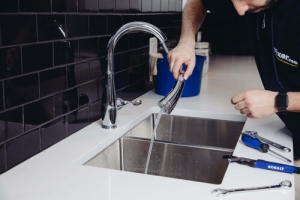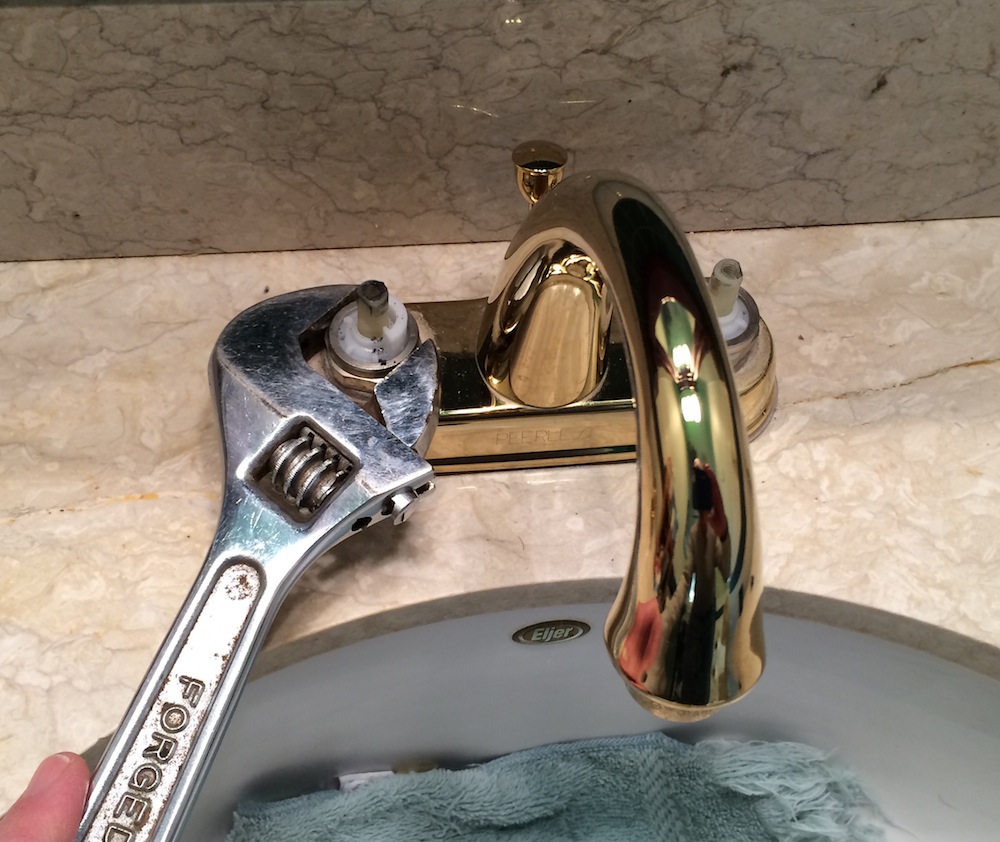This great article below about Why Is It Important To Fix Your Leaking Tap/Faucet? is unquestionably enjoyable. You should look it over.

Leaking faucets might feel like a small trouble, however their impact surpasses simply the nuisance of the sound. From drainage to sustaining unnecessary economic expenses and health threats, neglecting a dripping tap can result in numerous consequences. In this write-up, we'll delve into why it's critical to address this common family problem immediately and successfully.
Waste of Water
Environmental Impact
Dripping taps add substantially to water wastage. According to the Epa (EPA), a solitary faucet dripping at one drip per secondly can squander more than 3,000 gallons of water each year. This not only strains water sources but additionally impacts communities and wild animals based on them.
Step-by-Step Overview to Fixing a Dripping Tap
Tools Needed
Before attempting to deal with a leaking tap, gather the needed devices, including a flexible wrench, screwdrivers, replacement parts (such as washing machines or cartridges), and plumber's tape.
Common Tap Issues and Their Solutions
Determine the sort of faucet and the specific issue triggering the drip. Usual problems consist of worn-out washers, corroded shutoff seats, or malfunctioning O-rings. Refer to maker directions or on the internet tutorials for detailed guidance on repair services.
Financial Costs
Boosted Water Bills
Beyond the ecological impact, leaking taps can inflate water expenses considerably. The accumulated waste with time equates right into greater energy expenses, which could have been prevented with prompt repair services.
Possible Residential Property Damages
In addition, long term trickling can bring about damage to fixtures and surfaces surrounding the tap. Water buildup can create discoloration, rust, and even structural concerns if left neglected, leading to additional repair prices.
Wellness Concerns
Mold and Mold Development
The constant visibility of wetness from a leaking tap creates an optimal setting for mold and mildew and mildew development. These fungi not only jeopardize indoor air high quality yet additionally posture health risks, especially for individuals with breathing conditions or allergies.
Waterborne Diseases
Stagnant water in dripping faucets can become a breeding ground for bacteria and various other virus, raising the danger of waterborne illness. Contaminants such as Legionella bacteria grow in stationary water, potentially leading to significant health problems when ingested or breathed in.
Do it yourself vs. Expert Repair
Pros and Cons of Do It Yourself Repair Work
While some might attempt to fix a leaking faucet themselves, do it yourself fixings include their own collection of challenges. Without correct understanding and tools, DIY efforts can worsen the issue or cause insufficient repair work, lengthening the problem.
Advantages of Hiring a Specialist Plumber
Hiring a professional plumber makes sure that the underlying cause of the dripping faucet is resolved effectively. Plumbing technicians have the knowledge and devices to identify and fix tap problems successfully, conserving time and reducing the danger of additional damage.
Environmental Responsibility
Individual Contribution to Preservation
Taking duty for dealing with trickling taps lines up with wider efforts towards water preservation and ecological sustainability. Every person's actions collectively make a substantial influence on protecting precious sources.
Lasting Living Practices
By prioritizing punctual repair services and adopting water-saving behaviors, individuals contribute to lasting living methods that benefit both existing and future generations.
Preventive Measures
Routine Maintenance Tips
To avoid dripping taps, perform regular upkeep such as cleaning up aerators, evaluating for leaks, and changing damaged parts without delay. Furthermore, take into consideration installing water-saving gadgets or updating to more effective components.
Importance of Prompt Repair Works
Resolving trickling faucets as soon as they're discovered stops more water wastefulness and potential damage, eventually conserving both water and cash over time.
Influence On Home Value
Understanding of Well-Maintained Residential Property
Preserving a property in good condition, including resolving upkeep problems like leaking faucets, enhances its perceived worth and charm among potential customers or occupants.
Influence on Resale Worth
Features with properly maintained plumbing fixtures, consisting of faucets, command greater resale worths in the real estate market. Resolving dripping faucets can add to a favorable impact during building inspections and settlements.
Verdict
Attending to a dripping faucet surpasses mere comfort; it's an important action towards conserving water, minimizing financial costs, and securing wellness and home. Whether with do it yourself repairs or expert assistance, acting to take care of trickling taps is a tiny yet impactful means to advertise responsible stewardship of resources and add to a much healthier, more sustainable future.
How to Fix a Leaky Faucet: Step-by-Step Repair Guide
A leaky faucet may seem like a simple annoyance, but if it's not fixed promptly, that leak could cost hundreds to potentially thousands. From water damage to mold, mildew, and high water bills, even a tiny leak can be catastrophic if left unattended. Damage like this can even affect the overall value of your home, so it's important to take the right approach for leaky faucet repair. You may need the help of a plumber in some cases, but we've got a few tips you can try on how to fix a leaky faucet before calling the pros.
Four Faucet Types
When you're learning how to fix a leaky faucet, the first step is knowing what kind of faucet you're working with! There are four common types.
Cartridge Faucets
Cartridge faucets come in one- or two-handled varieties. In one-handled cartridge faucets, hot and cold water combines in a single cartridge. In the two-handled versions, hot and cold water are controlled separately and mixed in the faucet.
Ball Faucets
Ball faucets have a single lever you push up and down to adjust the pressure and rotate to change the temperature. A slotted metal ball controls the amount of water allowed into the spout.
Compression Washer Faucets
They're the oldest type of faucet, but they're still used in many homes — especially older ones. Compression faucets have two separate handles that, when turned, raise or lower the washer that seals a water valve. This valve stops water from flowing through the faucet when it is turned off.
Disc Faucets
Disc faucets rarely need to be repaired due to their maintenance-free design. The water flow is controlled by two discs — the upper one raises and lowers against a fixed lower disc, creating a watertight seal. If your disc faucet starts leaking, you may need to replace the seals or clean residue buildup from the inlets.
Fixing a Leaky Faucet
Step 1: Turn Off the Water
Whether you're learning how to fix a leaky bathtub faucet or how to fix a leaky kitchen faucet, always turn off the water supply to your working area when you're fixing a leak. The last thing you want is a flood added to your list of things to fix.
Look for the shutoff valves below your sink or around the tub and turn them clockwise to stop the water flow. If your faucet doesn't have shutoff valves, you may need to turn off the water for the whole house. Check to make sure it's off by turning the faucet on. If nothing comes out, you're ready to start the repair.
Step 2: Take Apart the Faucet
How you disassemble your faucet depends on the type of fixture you have. You can use a flathead screwdriver to remove the caps on top of the handle or handles for cartridge and compression faucets. Inside, you should see handle screws. Unscrew these with a screwdriver to remove the handle.
Disc- and ball-style faucets will typically have an inlet screw near the handle, and removing that will reveal the interior of the faucet.
Detach the Valve Stem
For cartridge- and compression-style faucets, you'll see the inner valve stem or cartridge once you remove the faucet handles. If you have a compression faucet, unscrew the brass valve stem. If you have a cartridge faucet, pull out the cartridge. If your cartridge has been in place for a while, it may require some tools or extra force to remove it due to mineral deposits.
Examine and Replace Parts
Once you've removed the parts, check them out to confirm what needs to be replaced. You may see corroded rubber washers, O-rings, stems, or cartridges. On a ball-style faucet, check the seats and springs for damage.
If you need to repair a leaky disc faucet, check the inlet and seals on the lower disc.
Once you determine what parts must be replaced, visit your local hardware store. Bring the damaged parts with you to ensure you can purchase the correct components to replace them.
Clean Valves and Faucet Cavity
If you've removed a stem or cartridge, you may notice mineral buildup in the faucet's threads. Use white vinegar to clean the valve seat by soaking it for a few minutes, then scrub it away with a soft toothbrush and rinse with warm water. You can also clean the interior of the faucet in the same way.
Reassemble the Faucet
Once your faucet is cleaned and the required parts have been replaced, it's time to reassemble it. Put the pieces back together and slowly turn the water supply back on. Doing this slowly is crucial because too much initial water pressure can damage the new hardware you've just installed.
https://homewarranty.firstam.com/blog/how-to-fix-leaky-faucet

I am very fascinated with and I hope you liked my piece. Feel free to take the opportunity to promote this page if you liked it. I love your readership.